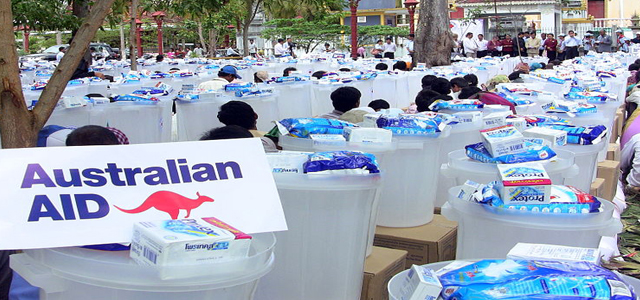On Tuesday, 8 May 2018, Treasurer Scott Morrison handed down his third federal budget. New measures included an effective cut to Australia’s international development program.
The announcement came as Micah Australia was campaigning in Canberra. They were joined by a cross section of politicians on parliament house lawn the morning after the budget speech.
Young adults from @micahaustralia gathered on the lawns of Parliament House to share our dismay at #AustralianAid being cut once again.
Grateful to be joined by @billshortenmp @tanya_plibersek @ChrisCrewtherMP @SenClaireMoore @PaulineHansonOz #Auspol #Budget2018 pic.twitter.com/fLjRz7NHZP
— Micah Australia (@micahaustralia) May 9, 2018
The Official Development Assistance spending will be frozen at just over $4 billion, with indexation to recommence in 2022-23.
The freeze, effectively a cut, brings Australia’s international development budget to the lowest proportion of Gross National Income in history.
Opposition Leader Bill Shorten has said that the cut was a strategic error on the government’s part.
“If Australia abandons and leaves the region, then we create a vacuum which others will fill,” he told Sky News.
Mr Shorten remained non-committal as to whether or not Labor would pledge to fill the gap, “We’re going to crunch our numbers and see what we can do.”
Uniting Church president Stuart McMillan has welcomed many aspects of the budget, including a $550 million Federal commitment to a new five-year agreement on Remote Indigenous Housing with the Northern Territory Government. Nonetheless, Mr McMillan expressed disappointment in the aid decision.
“Treasurer Morrison was blessed to receive manna from heaven in the form of extra revenue. Despite this providence, the Government has continued its freeze on foreign aid and there is no increase to Newstart,” he said.
“We know that this only entrenches poverty at home and abroad.”
The aid freeze means that development partners will miss out on more than $140 million over the next four years. If this trend continues Australian aid will only make up 19 cents in every $100 of gross national income by 2021-22.
Australia’s Foreign Minister, Julie Bishop, has previously defended the aid budget.
“As far as Australia is concerned we deliver an aid budget that is affordable, that is targeted and the majority of our aid is invested in the Pacific,” she said.
The budget also includes a new $3.8 billion fund for Australian arms manufacturers, to promote their products overseas. In an opinion piece, the CEO of the Australian Council for International Development, Marc Purcell, has said that Australia can influence its region far better with aid than with weapons.
“We are sending mixed messages to the international community when we want to cut aid but spend $3.8 billion on more weapons for the world,” Mr Purcell wrote.
Elsewhere, the budget also included an increase of $338 million in mental health funding and a new, $34 million boost to Lifeline’s funding. Lifeline has called the funding increase a “game changer.”
Jonathan Foye is Insights’ Editor





